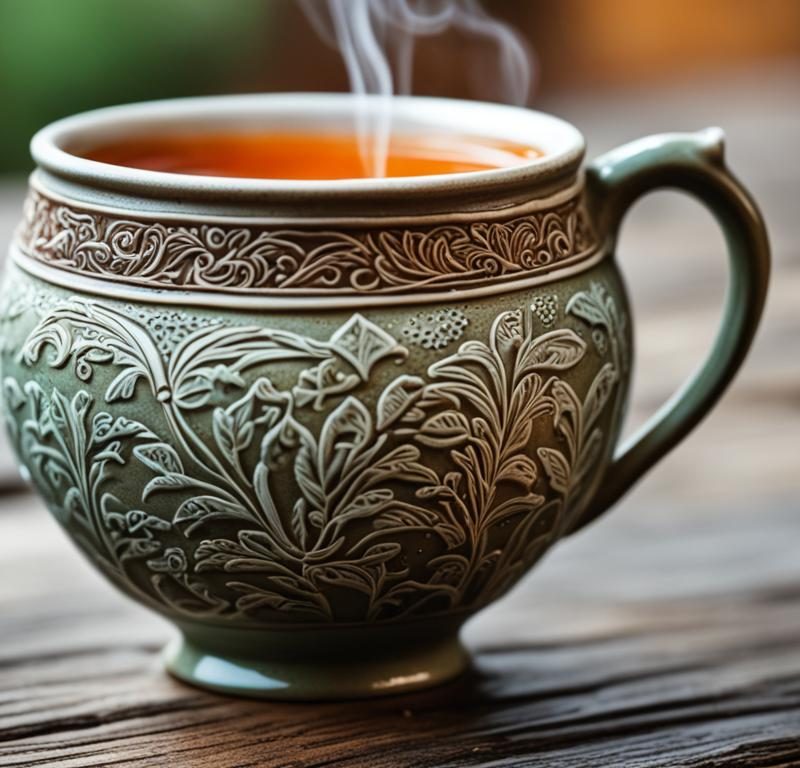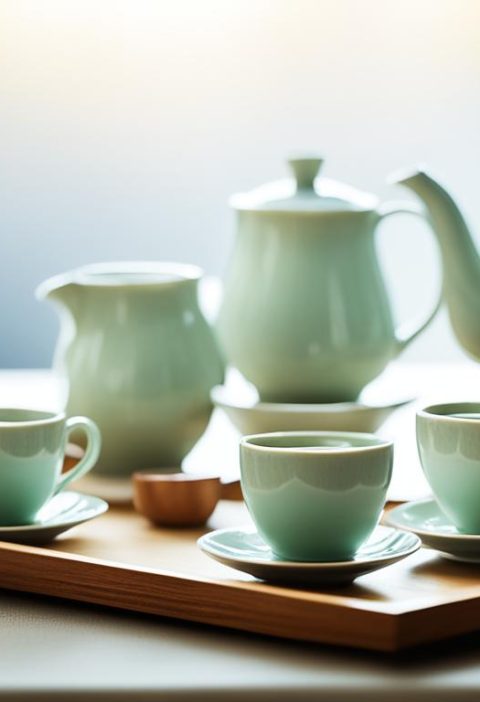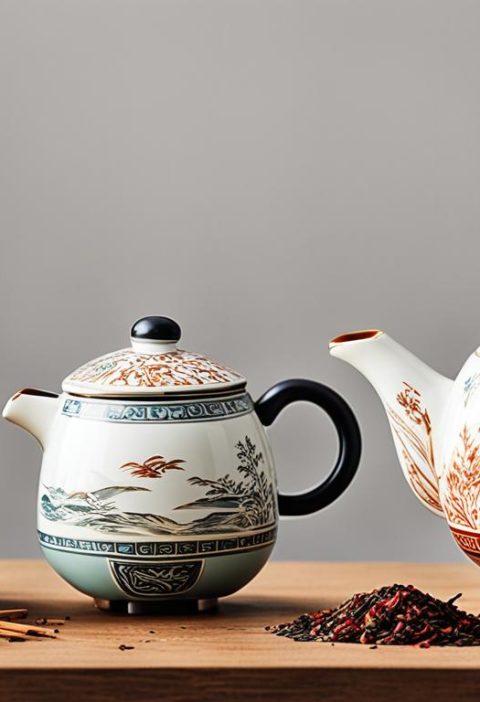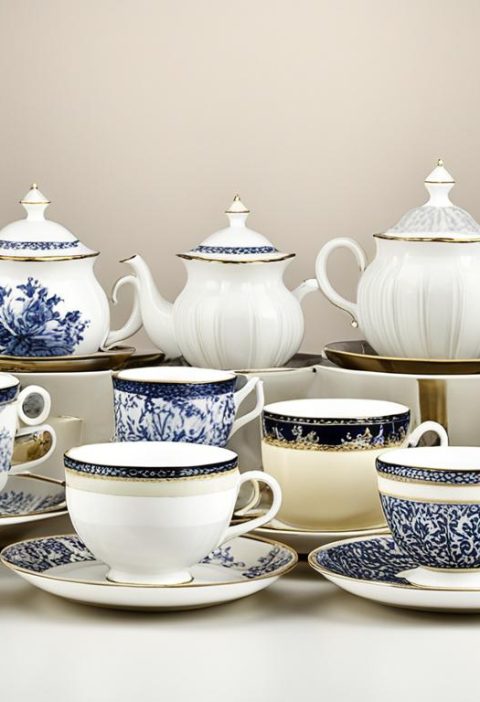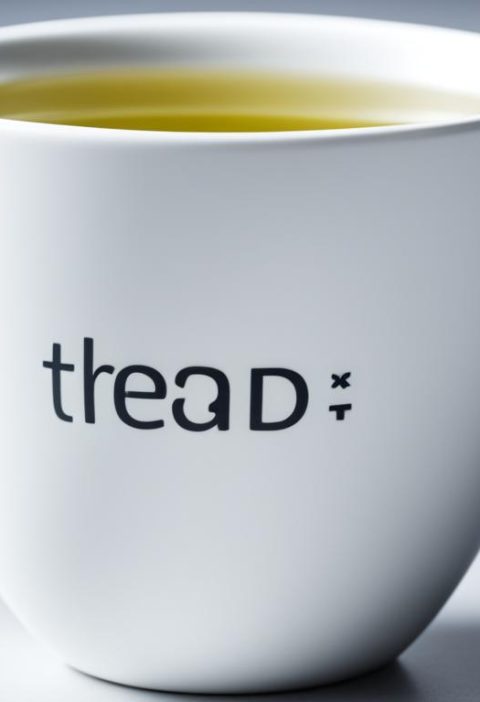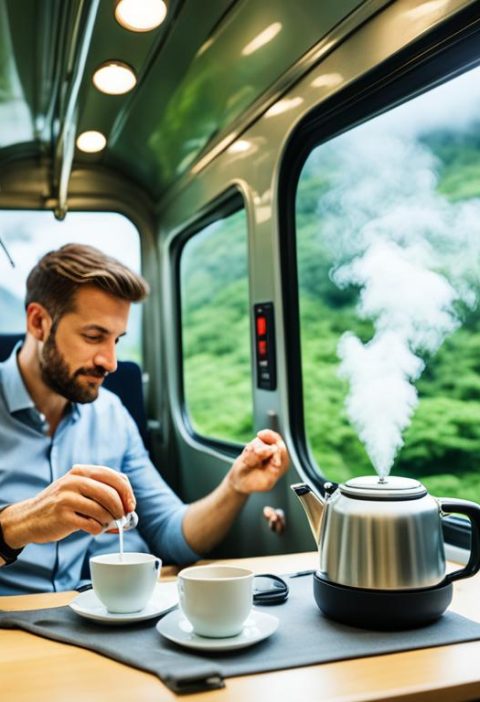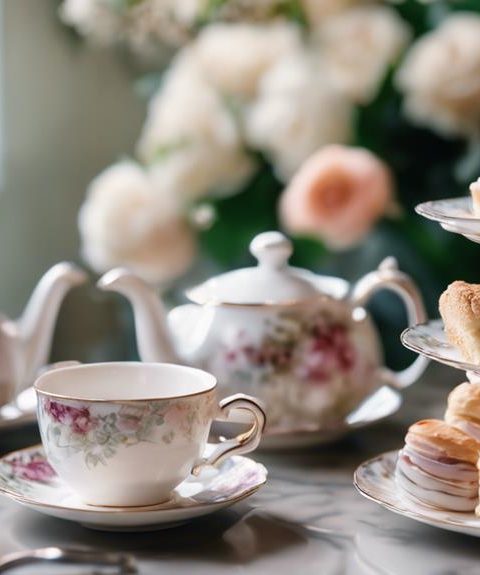The material of your teacup can change how your tea tastes. Choosing the right teacup material is key to enjoying your tea more. You need to think about the cup’s material, shape, size, the type of tea, and where you’ll drink it.
Teacups can be made of many materials, like glass, clay, pottery, porcelain, stainless steel, and even disposables. Each type gives the tea unique qualities, affecting its smell, taste, and what you taste after. The cup’s porosity, thickness, and how it holds heat also matter for your tea experience.
Choosing the best teacup means knowing how each material affects your tea. Think about what you like in a tea, and how you enjoy the whole tea drinking process. The right teacup material will make your favorite teas taste even better, allowing you to enjoy every drop.
Key Takeaways:
- The choice of teacup material significantly impacts the flavor of tea.
- Factors such as material type, cup shape, cup size, tea type, and consumption location should be considered when selecting a teacup material.
- Teacup materials such as glass, clay, pottery, porcelain, stainless steel, and disposables have different effects on the aroma, flavor, and aftertaste.
- The porosity, thickness, and heat retention of the cup also contribute to the tea tasting experience.
- Choosing the best teacup material depends on personal preferences and desired flavor profile.
The Impact of Aroma in Tea Taste
Aroma plays a big part in how we experience tea. A good scent makes tea drinking more enjoyable. The material of our teacup affects this smell. This changes how our tea tastes.
How does teacup material affect the aroma of tea?
The size and what the teacup is made of matter. A wider cup lets more smell out, so you can smell more. A narrower one focuses the smell at the top, keeping it from you. The cup’s material also changes how the smell comes across.
What are the different materials that can impact the tea’s aroma?
Teacups can be glass, bone china, porcelain, or even clay. Glass keeps the original tea smell well, being smooth and inactive. Bone china boosts floral smells. Porcelain lets the tea’s real smell come out. Clay and stoneware might grab a bit of the smell, adding an earthy hint.
How can the teacup material enhance the overall taste experience?
The material of your teacup can make your tea smell and taste better. Finding a cup that matches your tea’s aroma can make the experience richer. Glass for a clear smell or bone china for more flowers, choosing well adds to the joy of drinking tea.
In Summary
The cup you choose affects your tea’s smell and taste. Think about the cup’s size and material to enjoy the smell most. Try different cups to find what makes your tea aroma best. Picking the right cup enhances how you enjoy tea.
Teacup Porosity, Thickness, and Flavor Interaction
The kind of teacup you use affects your tea’s taste. The cup’s porosity and thickness greatly matter too. They change how the tea’s flavors mix. So, let’s explore how these teacup features touch your tea’s taste sensitivity.
How does porosity affect tea flavor?
Porosity means how well a cup can soak up tea. A cup with pores can take in some of the tea’s flavors. This might make the tea taste stronger or, it might lose some flavors to the cup.
For example: A bold black tea might taste even better in a porous cup. But, a delicate green tea’s subtle flavors might get lost in it.
Does the thickness of the teacup matter?
Yes, the thickness of your teacup changes your tea’s flavors too. Thicker cups hold heat longer. This might change how quickly your tea cools and its flavor. The thickness can also affect how you feel the tea when you drink it.
For example: A thicker cup keeps tea hot for longer. This can help the flavors get richer over time. But, if you like your tea cooler, a thinner cup might suit you better.
What happens when flavor interacts with the teacup?
The choice of teacup material also touches the tea’s flavor. Materials like clay or porcelain can add unique tastes to your tea.
For example: Clay cups bring special flavors to the tea. Tenmoku cups, however, make tea taste smoother and richer.
Still, cups made from glass, bone china, or porcelain don’t change the tea’s flavor. But, they add to how the tea looks, feels, and the overall experience.
| Teacup Material | Porosity | Flavor Interaction | Tea Taste Sensitivity |
|---|---|---|---|
| Clay | High | Interacts with tea to enhance flavors | Medium to High |
| Glass | Non-porous | Inert, no flavor interaction | Low |
| Porcelain | Non-porous | Inert, no flavor interaction | Low |
Understand what you want your tea to taste like when choosing a teacup. Whether you’re after bolder flavors or the tea’s original taste, these factors help you decide wisely.
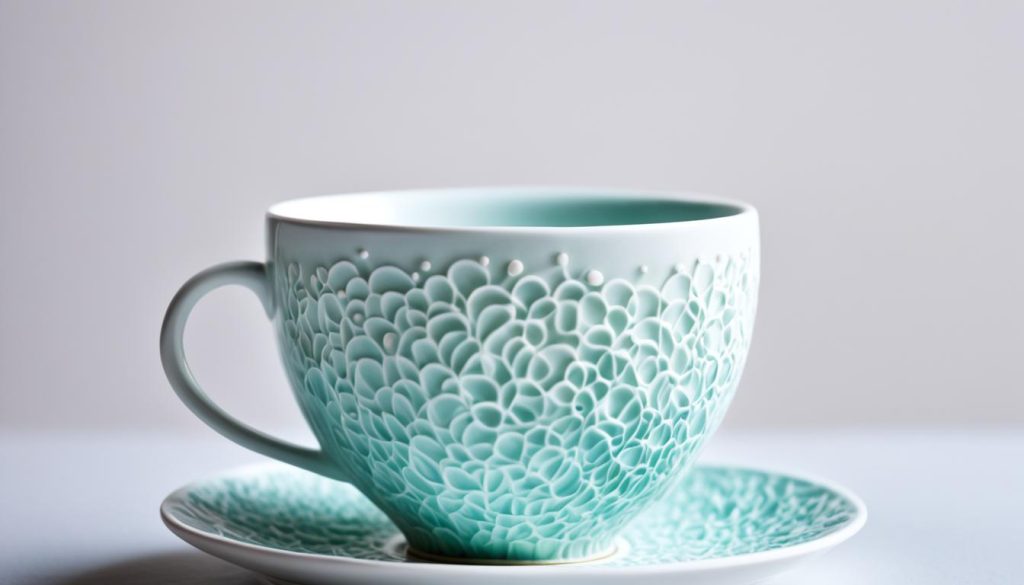
The Influence of Cup Shape and Size on Tea Taste
The teacup’s shape and size really matter when you’re enjoying tea. They change the tea’s temperature, smell, and taste. You get to notice more about your tea with each different cup. Maybe you like cups that are shallow, narrow, or very thin. They all add something special to how your tea tastes.
-
How does cup shape affect tea taste?
A teacup’s shape changes how tea tastes. A shallow, wide cup spreads the smell around. This makes the tea taste better. A narrow cup sends the smell right to your nose. It makes the taste stronger. A super-thin cup gives tea a soft, special flavor. This is great for special kinds of tea.
-
What role does cup size play in tea taste?
The size of your cup affects how hot your tea stays. Cups with thin walls cool your tea quickly. This makes tea good if you like it cooler. Cups with thick walls keep tea warm longer. They make the flavor deeper. Think about how hot you want your tea to be when picking a cup.
-
Can cup shape and size affect the aroma of the tea?
Yes, cup shape and size really matter for how tea smells. Cups can help the tea’s smell reach your nose better. This makes the taste nicer. Try different cups to find what makes tea smell and taste best.
-
Are there specific cup shapes and sizes for different types of tea?
Yes, some teas go best with certain cup shapes and sizes. Matcha tea is often enjoyed in wide, bowl-shaped cups. Tall, thin cups are great for white tea. Think about what tea you’ll drink. Then, choose a cup that’s perfect for that tea.
-
What should I consider when selecting a teacup shape and size?
Think about what you really like in your tea. Do you want it to stay hot longer or cool off quickly? Also, pick a cup that smells right to you. Choose a size that fits your hand well. This will make your tea time more enjoyable.
Conclusion
The material of your teacup matters a lot when you love tea. Each material, shape, and size can change how the tea smells, tastes, and feels on your lips. Things like how much air they let through, how thick they are, and if they keep the tea warm are also important. There isn’t just one perfect material for teacups. But knowing how each type works with your tea can make it taste even better.
Some teacups, like those made of clay, can make certain teas taste better because they’re good at holding in the flavor. On the other hand, cups made of glass let you taste the tea’s true flavor. Trying out different teacups and seeing which you like best is the fun part. You could also read a guide to learn about the different choices.
Helping your tea taste better is about more than just the tea you pick. It’s also about the teacup you choose. Think about what material would work best for the tea you love to drink. Try various materials, shapes, and sizes to see what feels right with your favorite teas. Here’s to finding the perfect teacup material that makes your tea drinking even more delightful!
